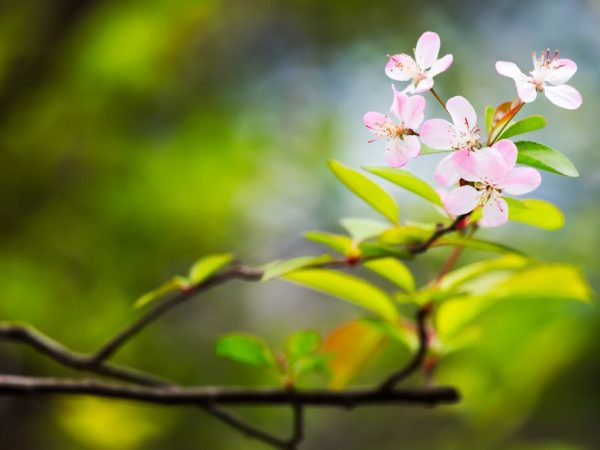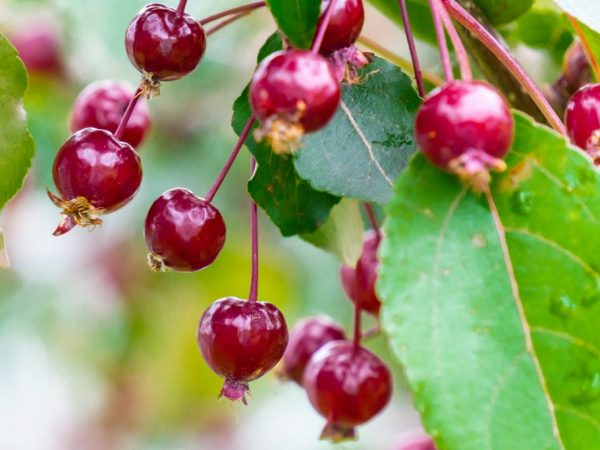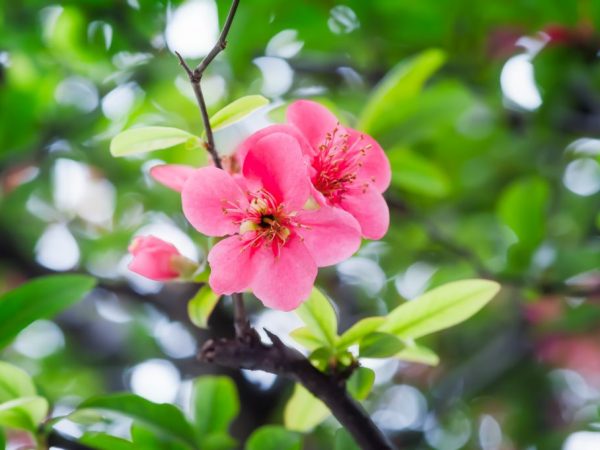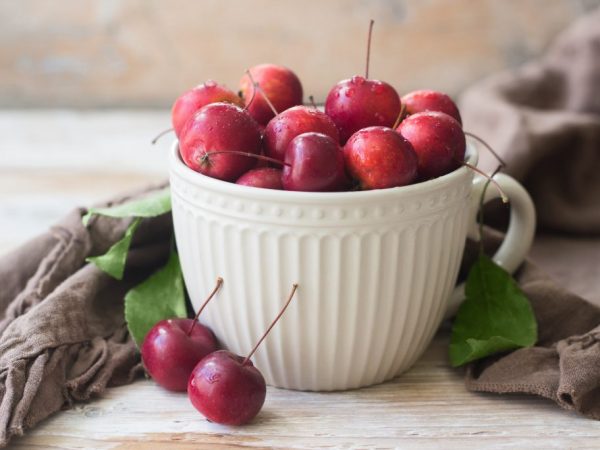Growing Ranetok apples
Apple trees are not resistant to frost, which motivated breeders to develop improved species. Ranetka apples came from the Sibirka variety and large-fruited representatives of the culture. Repeated crossing with European species improved their adaptation to the climate, endowed with frost resistance and abundant fruiting.
- Characteristics of the variety
- Description of the tree
- Description of fruits
- Benefits and calories
- Taste
- Pollination
- Yield
- Winter hardiness
- Disease and pest resistance
- Tree lifespan
- Decorative characteristics
- Varieties and their characteristics
- Differences between an ordinary apple tree and a ranetka
- Landing
- Timing
- Seat selection
- Technology
- Care
- Watering
- Top dressing
- Pruning and shaping the crown
- Preparing for winter
- Preventive treatment
- Features of ripening and fruiting
- Harvesting and storage
- Growing in different regions
- Gardeners reviews

Growing Ranetok apples
Characteristics of the variety
Ranetka is a collective concept that unites hybrid varieties of apple trees. They have a number of common characteristics that clearly distinguish them from their "brethren".
Distinctive features of trees of this species are considered the ability of fruiting in winter and decorative fruit. Selective variety allows you to choose the right variety for a specific region.
Description of the tree
The winter apple tree has an average height that reaches 1.6-2 m. Sometimes it grows up to 5-7 m. The crown is spreading, requiring a lot of space. The thick post is covered with several additional powerful branches.
The foliage is medium, the leaves are bright green, pointed.
Description of fruits
Ranetka is classified as a small-fruited species for its decorative apples. The rind can be red or yellow, depending on the variety of the fruit tree. Fruits reach 5 cm in diameter and 15 g in weight.
Benefits and calories
The use of decorative fruits is a high content of various microelements, vitamins, essential oils, fiber, carotene. They enrich food and protect the body from many pathological processes (diseases of the cardiovascular system and gastrointestinal tract, vitamin deficiency, anemia, metabolic disorders).
Apples, rich in nutrients, are consumed in moderation so as not to cause hypervitaminosis, therefore, regardless of the variety, you need to eat no more than 2 pieces per day. Excess leads to disruption of the functions of the excretory system. The calorie content of the product is only 47 kcal per 100 g.
Taste
The palatability of the fruit directly depends on the variety and its characteristics. Apple trees of the same species, grown in different regions and climatic conditions, differ in this indicator. A variety of fertilizing and seedling care plays an important role in shaping the taste of apples.
Breeders have bred numerous varieties that have individual taste characteristics, but most of the fruits are sour-sweet with a mild astringency. In certain regions, they grow juicy and sweet.
Pollination
Fruit trees are distinguished by the method of pollination, taking into account which a place for planting is chosen.Self-pollinating specimens do not need bees to carry pollen from one tree to another.
The ranetka apple tree will not do without the participation of insects in the pollination process, but you should not plant additional trees from which the bees will transfer pollen. The flowering of the culture is friendly, and in the neighboring areas there is always another variety of apple trees.
Yield
The subspecies is distinguished due to its abundant fruiting: one tree brings at least 50 kg of apples. The amount of harvest and the duration of ripening depends on the variety. From the early species, the fruits are harvested from the end of August, the late ones bring apples until deep cold weather (December, January).
In warm regions, the fruiting period is longer than in cold ones. This is due to the early onset of spring and late frosts, which allows several crops to be harvested from one tree per season.
Winter hardiness

Apple trees tolerate cold well
Most of the apple trees are not adapted to ripening in winter cold conditions, but on the basis of Siberian prototypes, ranetki were bred, which perfectly tolerate temperature extremes and continue to grow and develop.
On the territory of Siberia, there are wild birds that have become the prototype of the ranetki and are adapted to lower temperatures down to minus 48 ° C. The only condition for abundant winter fruiting is the use of spruce branches and rags, which are wrapped around the trunk. This protects the apple tree from freezing and rodent attacks.
Disease and pest resistance
The variety is popular not only due to long-term fruiting, frost resistance, but also immunity to most diseases. These crops are not susceptible to attacks by harmful insects.
Preventive measures are carried out annually, which are aimed at increasing the general tone of the fruit tree. They prevent diseases in a timely manner, which increases the apple tree's ability to bear fruit.
Tree lifespan
Young trees begin to bear fruit in the second year after rooting in the open field. The seedlings go through the process of adaptation to a new place, take root, get used to the climate, and then begin to form fruits.
According to the description, ranetki are perennial species that bear fruit abundantly for 2-3 decades. Just planting an apple tree is not enough. You need to take care of her properly, incl. promptly eliminate possible threats.
Decorative characteristics
The description of the ranetki would be incomplete without mentioning their decorative features. The tree is small, not exceeding 2 m in height (with the exception of the golden variety, 7 m). The crown can be formed in different ways.
A tree covered with small apples is the highlight of any garden plot. In winter, ranetka with red fruits will contrast with the snow and saturate the landscape with colors.
Varieties and their characteristics
The selection of apple varieties largely depends on the climatic characteristics of the planting region. Breeders have developed varieties of frost-resistant apple trees, but each of them has special characteristics that need to be studied before buying seedlings.
Varieties of apple trees:
- Dobrynya. The variety is popular due to its increased resistance to frost and drought, intense growth, classic sweet and sour taste of the fruit. The main feature is late fruiting, which occurs in the 5th year after planting in the ground;
- Gold. The most cold-resistant variety, the trees reach 7 m. The yellow peel of the fruit distinguishes the species from among the “fellows”. The crop is not able to maintain its qualities for more than 30-40 days;
- Red. Suitable for culinary purposes: for making purees, juices and compotes. The tree begins to bear fruit one year after planting. The apple skin is red and the flesh is juicy and creamy;
- Laletino. A small ribbed apple is considered the most delicious of all varieties. The pulp is light pink, dense and juicy;
- Long. Delicious, sweet and sour fruit.The peel of apples is red with a slight waxy bloom. Fruit formation occurs in the 4th year after rooting;
- Raspberry. The fruit resembles a plum and weighs no more than 10 g. The main difference from other species is the long storage period. A small apple does not lose its juiciness, tenderness and sour-sweet aftertaste until early spring;
- Siberian. The variety is of medium fruiting, but it is distinguished for the taste of the fruit. The apple tree is resistant to scab and infectious diseases. The size of the fruits is medium, and the weight reaches 20 g. The peel is yellow with a reddish tint.
Differences between an ordinary apple tree and a ranetka

Very small apples
The fruit world is replete with a variety of varieties, which are sometimes difficult to distinguish one from another for an inexperienced person. The first and main sign by which ranetki are recognized is the size of their fruits. In ordinary apple trees, they are large, while in this variety type they are small.
The variety can be identified by evaluating the nesting formation of fruits. Common varieties can tie only one apple, ranetka - up to 6 pcs.
Landing
From the outside, it looks like the species is undemanding to the conditions of keeping and planting, but it is worth observing several rules that will help increase the viability and yield of plantings. First of all, they check the quality of the purchased seedlings. To do this, their root is slightly incised. The color of the cut should be white, other shades indicate disease.
The tree should be annual and have no more than 3-5 skeletal branches. The adaptation period of an adult seedling (from 2 years or more) is long, so you should not wait for the harvest in the second year after planting.
There is another way to grow apple trees, which involves planting seeds outdoors. Genetically inherent "vitality" will allow you to preserve all the characteristics and form a healthy tree. You can graft several branches of the ranetka to the rooted apple trees on the site, which will not spoil the taste of the fruit.
Timing
The description of the root system directly affects the timing of planting seedlings in open ground. Choosing the right time shortens the adaptation period and stimulates the tree to establish itself quickly.
Instances with a closed root system are planted from spring to the last days of autumn. Open - Requires rooting before bud break.
Seat selection
The health and yield of a crop depends on the selected planting site, which must meet the requirements of the variety. Ranetki are planted in sunny and draft-protected areas. Apple trees are placed away from buildings and other trees to prevent darkening of the seedlings.
Delicious fruits ripen in fertile soils, which should not be too acidic. They normalize the balance with the help of ash and dolomite flour, which are added to the ground. Groundwater in the selected area must pass at a level of at least 2 m from the ground surface, otherwise the soil must be well drained.
Technology
At first glance, planting a fruit tree is a simple task, but the technology for introducing it into open ground directly depends on the chosen season. November is considered a favorable autumn month, since the rhizome is actively growing during this period. The rooting procedure includes a number of activities:
- dig a hole (80x80x80 cm) and drive into the middle of a stake (at least 1.5 m);
- the roots of the seedling are straightened and lowered into a prepared place;
- the hole is sprinkled with earth so that the root collar remains on the surface, and tamped;
- bring in water (2-3 buckets);
- during the period of stable frosts, fertilizers are added to the root, which nourish the earth during the spring thaw.
The description of planting in spring includes the same steps, but the difference is in the way the soil is prepared. Ash and nutrient soil are introduced during planting, then watered abundantly with water and mixed with earth. After rooting and tamping, 5 liters of water are added to the hole. When it is absorbed, the place is sprinkled with earth, achieving a flat surface.
Care

Apple trees grow without specific care
Ranetki apple trees have inherited strong immunity from their "progenitors", so they are undemanding to care. But there are general rules that must be followed.
Delicious, juicy fruits are harvested from apple trees, which are properly looked after. Timely watering, the introduction of well-selected nutritional components and the formation of an optimal crown shape increase the yield of the crop and the taste of apples.
Watering
Regular watering is the key to active growth and the formation of a powerful root system, therefore, annual seedlings are moistened at least once every 7 days in wet summer conditions. You need to add up to 4 buckets of water to one hole.
During dry periods, the fruit tree should be watered more often and with plenty of water to prevent the root system from drying out. From the second year, watering is reduced: water is added during a period of extreme heat or active fruiting.
Top dressing
The description of tree care necessarily includes the timing and rules for applying top dressing. Several fertilizers are carried out during the season, which differ:
- in the end of April. Preference is given to organic fertilizers (humus - 6 buckets, urea - 2 kg), which are applied to the trunk circle;
- before flowering. In hot periods, liquid-based fertilizers are used. Potassium sulfate (750-800 g), superphosphate (1 kg) and Effekton (1 bottle) are placed in a barrel (150-200 l) filled with water. The mixture is infused for at least 7 days, after which the plantings are fertilized with it (50 ml per well). Before and after the event, the near-stem circle is watered abundantly;
- during the period of active fruiting. In order for the apple tree to form tasty fruits, it is fertilized with a solution of potassium humate (15 g) and nitrophoska (1 kg), which is obtained by combining the funds with 200 liters of water. Add 3 buckets of useful composition to one hole;
- in the fall. Apple trees are fed after harvest and a dry product is added. Superphosphate (300 g) and potassium sulfate (300 g) are added to each well, which gradually saturate the soil during the rainy season.
Pruning and shaping the crown
Low-growing apple trees require 2 pruning, which is carried out in spring and autumn. This makes the tree look more beautiful. During this procedure, it should be borne in mind that strong branches grow below weak ones. Remove unnecessary shoots with pruning shears or garden shears, depending on the thickness of the branch.
Form a crown in the first year after planting the seedling in open ground. The period of active fruiting requires increased attention to the procedure: it is necessary to prevent the branches from breaking off under the weight of the fruit.
Preparing for winter
Ranetki are winter-hardy apple trees, but young trees need to be protected from hypothermia for several years. The main method is soil mulching, which is carried out using compost, vermicompost, chicken droppings.
Fertilizers are laid out in the trunk circle, sprinkled with straw on top (with a layer 5 cm thick). The “heat cushion” provides shelter for earthworms, which absorb humus and straw. They serve as a means of loosening and transporting nutrients to the required depth.
Preventive treatment
Ordinary apple trees are susceptible to diseases and pests, unlike ranetka, which is resistant to most of them, but preventive measures are taken to prevent the very possibility of disease occurrence.
If a seedling is infected before planting in the ground, this weakens its immunity and makes it easy prey for pests.
Mandatory spraying is carried out before the start of sap flow. It is aimed at destroying parasites that wait out the winter under the bark of a fruit tree. Cracks that appear on the trunk are treated with copper sulfate (1% solution), wiped with sorrel leaves and covered with garden varnish.
If necessary, trapping belts are used to protect the trunk, which prevent the movement of pests.
Features of ripening and fruiting
Fruiting of fruit trees is periodic, it begins in the second year after planting. One adult apple tree bears 50 to 100 kg of fruit per season.
A significant factor that affects the timing of the ripening of the crop is the varietal affiliation. Early species enter the fruiting phase earlier, while winter ones continue to bear fruit in frost conditions.
Harvesting and storage
Resistance to frost increases the time of fruiting. The crop is harvested from the last decade of August until the last formed fruit is removed. The game is left untouched in order to spoil the birds with the arrival of frost.
Winter varieties are recommended to keep fresh, since they bear fruit longer and are resistant to conditions of detention. They are placed in wooden boxes in a thin layer and kept at a temperature of 0-2 ° C. Fruits of early ripening can be frozen even as a whole due to their miniature size.
When removing them for the winter, follow a number of rules that will help preserve their taste and species qualities:
- maintain the temperature regime, avoiding its prolonged change;
- harvest with the utmost care so as not to deform the skin and preserve the stalk;
- it is better to spend the winter for apples separately from other vegetables and fruits in order to prevent the rapid ripening of other crops.
Growing in different regions
Apple trees are suitable for growing in most climatic zones due to their resistance to bad weather conditions. Trees ripen quietly in Siberia, but the Far North is an exception, because its critically low temperature does not allow the fruit to ripen.
Regions of the European part of Russia prefer fruit trees with large, juicy fruits. This is due to the fact that early spring and late winter create an ideal time period for the full formation and maturation of large fruits.
Gardeners reviews
Due to their resistance to climatic conditions, long-term fruiting and ease of cultivation, ranetki are popular among gardeners.
The ranetka apple tree is famous for its decorative features. The small size of the fruits, their juicy appearance increase the aesthetics of the garden area, especially in winter. The fruits received positive reviews due to the high concentration of useful elements in them. They can be eaten fresh, frozen, made into jam or compote.

